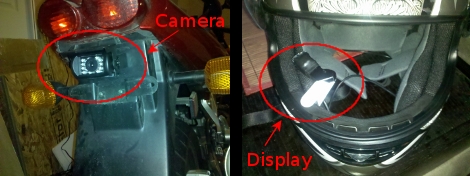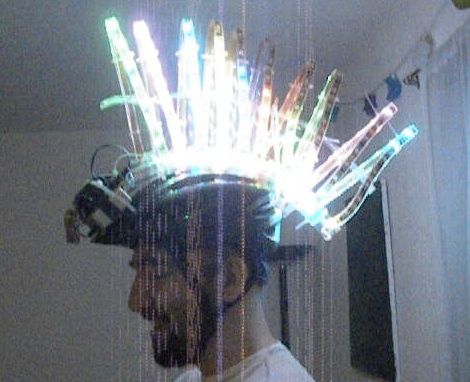
Want to see what’s behind you when riding your sport bike without taking your eyes off the road? They make rear view cameras for that but [Nescioqd] wanted a rear display right in his helmet (PDF). He started by mounting a rear-pointing camera on the back of the bike, powered from the 12V feed for the taillight. On the display side of things he picked up a Myvu Crystal wearable display. This is like a pair of glasses that have small LCD screens were the lenses should be. [Nescioqd] removed one lens and mounted it inside the helmet.
Since the display resides inside the helmet there is some concern about being able to see at night with a bright screen below your eyeball. [Nescioqd] actually ran into the opposite problem at first, bright sunlight makes it difficult to see the image on the LCD screen. He fixed this by picking up a dark tinted helmet visor (the easiest solution) but we’d love to see a photoresistor used to regulate the backlight level.
It would be interesting to see both screens used, with rear-view on one side and an instrument display on the other.













